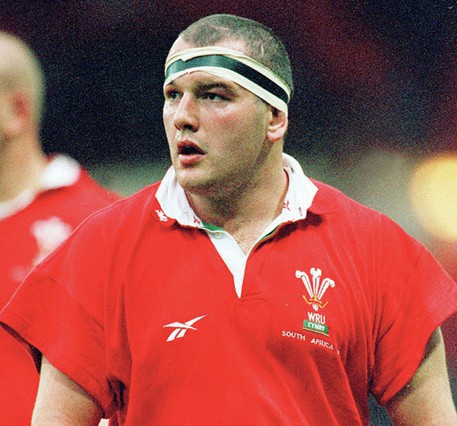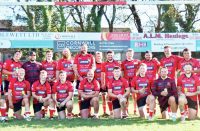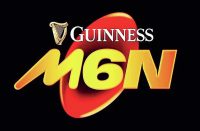Brendan Gallagher continues his series looking at rugby’s great schools

CHRIST College Brecon was one of the cradles of Welsh rugby, a considerable claim to fame, and although the school has produced notable players in recent times its kudos as a rugby nursery and hotbed is firmly founded in those early pioneer players.
They were playing rugby at Christ College before the Welsh Rugby Union was formed and their first game against the old enemy Llandovery was in 1879, one of the oldest schools fixtures in the world until it was suspended in 2013.
We will come to the four former pupils who helped Wales beat New Zealand in 1905 but the school produced other earlier Wales internationals not least Bill Evans, a rather mysterious character, who won two caps in 1882 and 1883.
After leaving Christ College and studying at Jesus College Oxford, Evans combined a career in teaching with his sporting pursuits and later emigrated to Australia and became headmaster of Adelaide GS. On his return to Wales, however, something went badly awry and he spent his final years living rough in the hills above Rhymney.
Christ College began to dominate the schools rugby scene in the 1890s with Llandovery their only serious rivals and out of that rugby culture came four players who were to write their names large against the All Blacks in 1905.
Willie Llewellyn was a small genius on the wing, the scorer of 16 tries in 20 Tests and a Triple Crown winner in 1900, 1902 and 1905, his final year of Test rugby. Indeed his selection against New Zealand was considered controversial because at 27 he had semi-retired and was playing junior rugby with Penygraig.
Llewwellyn was a noted tourist with the Lions in 1904 scoring four tries in three Tests against Australia while he also appeared against New Zealand. A chemist in Tonypandy, his pharmacy was spared by the rioters in 1910 on account of his sporting popularity.
On the other wing, both for the Lions in 1904 and Wales against NZ in 1905 was Teddy Morgan, another dasher who claimed 13 tries in 16 Tests including the solitary score of the game against the All Blacks. After leaving school, Morgan became a medical student at Guy’s and was a key player at London Welsh.



Rugged lock Jack Williams was an intriguing old boy of the school. He was outstanding that day against New Zealand but only won four Wales caps in total although he was also capped by the Lions in 1908 after a successful season captaining London Welsh. Williams came to a sad end after retiring early from rugby and working as a colonial officer in northern Nigeria. He came close to death in 1910 after being shot but died the following year, aged just 28, from Blackwater fever.
Which brings us to the English born Alfred ‘Boxer’ Harding who arrived with his family in Wales via Market Rasen. A mobile forward with a good kicking game, he was a prominent member of the Wales team from 1902 onwards and toured Australasia under the captaincy of David Bedell Sivright in 1904. By 1905 he had moved to London and joined London Welsh where he was an influential captain for three years. It was while in London when playing for Middlesex when they were thrashed by New Zealand that he got a good look at the All Blacks and the story goes he identified a weakness in their scrum which he relayed to the Wales selectors. Whatever the story, he played a fine hand in the defeat of New Zealand and finished his career by captaining the Lions to Australia and NZ in 1908.
While not a notably successful tour, Harding had no fewer than five other College old boys for company: Jack Williams, Jack Jones, James Jones, John Dyke and William Morgan – Teddy’s brother. Jack Jones was an early holder of the “Prince of Centres” moniker the Welsh like to bestow on their best midfielders. A strong but elegant centre who learned the game at Christ College and Pontypool, he broke into the Wales team in 1908 and had 14 caps by the outbreak of World War 1. He was capped again in 1921 and would probably have earned at least double that number had war not intervened.
For the Lions he not only emerged with honour after playing in three Tests against New Zealand in a struggling team but two years later he was again a standout for the tourists in South Africa. In New Zealand, in 1908, he played alongside his older brother James ‘Tuan’ Jones in the Wellington and Auckland Tests, a singular honour for Christ College. Tuan was eventually capped by Wales in 1913. A third brother, David ‘Ponty’ Jones was capped by Wales in 1907.
Then there was full-back John Dyke, an early exponent of the spiral kick who earned one cap with Wales in 1906 but nonetheless toured with Harding and the 1908 Lions. He had a younger brother Louis, another Christ College old boy, who played centre in three of Wales’ four Grand Slam games that season but was surplus to requirements thereafter.
There have been players and teams of note in the modern era not least the 1983 Lion Rob Ackerman who starred at centre in the school team in 1978 and 1979.
Indeed he played in the centenary game against Llandovery and virtually went straight from schools rugby to representing Wales against New Zealand at Cardiff Arms Park the following year.



A mind-boggling six-try haul against Gloucester in one of his first games out of school for the Black and Ambers had attracted the attention of the Wales selectors and Ackerman was a regular in the Wales team before turning professional with Whitehaven.
In that same Brecon team in 1979 was a lively flanker Simon Griffin who was to play for Oxford University and Pontypridd while more recently Andrew Lewis was the last former pupil from the school to win full Wales honours. Andrew was a very fast, mobile prop in the 1990 and 1991 school sides and quickly made an impact with Cardiff where he played 234 first team games. He made his Wales debut in 1996, the first of 29 caps, and during the second half of his Test career, under Sir Graham Henry, was often used at hooker.
Another fine player from this era – when Cardiff full-back Chris Webber and Jon Williams formed a fine coaching double act – was scrum-half Matt Powell who, after starting with Saracens and then helping Quins to the Tetley’s Bitter Cup in 2001, proved a stalwart performer for
Worcester for six seasons. Another No.9 who passed through the school – as well as Campion, Hornchurch and Kirkham GS – was Ireland’s Kieran Marmion, who has 28 caps thus far including starting in 2018 when they defeated the All Blacks. Kieran’s father, Mick, was a coach at all three schools with his family following wherever he worked.
The big rupture in the historic match against Llandovery came in 2013 when Christ College –a small school that didn’t want to go down the rugby scholarships route – sniffed the wind and decided they could no longer compete long term against one of the strongest schools in Britain.
Physically they felt there was an unacceptable danger element – that would only grow – in competing against Llandovery where a number of their players were training with the big clubs and earmarked for a professional career. Philosophically there was also a thought that the school wanted to offer a wider range of sports to its boys and girls –a more rounded education? – but it was a wrench nonetheless.
They lost that final match 43-10 but in fairness an outstanding Llandovery were inflicting similar beatings on most schools on their circuit that year. Christ College won 11 of their 16 matches that season and repeated that figure the following season on their still strong circuit. They weren’t abandoning rugby whatsoever, they were just trying to cut their cloth according to their circumstances and the changing landscape of schools rugby.
























Pingback: วิเคราะห์บอลวันนี้